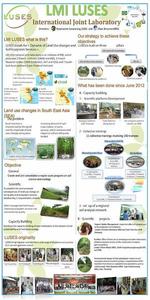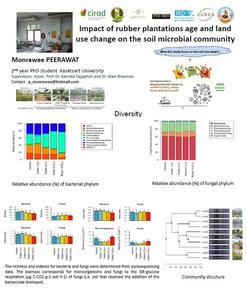Measuring water flows and balance within the “critical zone” of tropical agro‐ecosystems of South East Asia
Summary
- Presentation
- How to apply
- Result of selection process
Location : Laung Prabang, Lao PDR
Date: 28th October - 1st November 2013
Since about 2 decades, the tropical agro‐ecosystems of South‐East Asia are submitted to outstanding changes of farmers’ practices following the combined pressure of population growth in rural areas and of the market’s demands on cash and food crops.In the context of climate change, the impact of the land use changes on the hydro‐bio‐geo‐chemical processes occurring in the “critical zone” (National Research Council, 2001) is threatening the sustainability of the novel practices.
The “critical zone” which extends from the top of the bedrock up to the top of the canopy, is indeed the zone where surface water and groundwater are split, where the water resource forms and acquires its chemical composition and where polluting substances are mobilized.
It is hence the principal source of all environmental negative or positive impacts on water resource resulting from Land Use and Climate Changes. In order to improve the management of water resource in South East Asia, there is a strong need for a better understanding of the transformations which are occurring in the critical zone. Such knowledge requires a detailed assessment of water fluxes at the Soil‐Vegetation ‐Atmosphere interface using up‐to‐date and cost effective devices.
Objective :
The objective of the proposed collective training is to strengthen the knowledge of staff from national institutions in South East Asia in the field of hill slope and small catchment hydrology.
Four areas will be prioritized:
(1) stream discharge measurement (i.e. propeller and tracer‐based methods);
(2) estimate of soil moisture (i.e. gravimetric and Time Domain Reflectometry methods);
(3) estimates of soil permeability (Wiltschut infiltrometer);
(4) and groundwater/stream water interactions (piezometric measurements and 2Delectrical resistivity tomography).
This project targets an audience of scientists, engineers and technicians with basicknowledge in the field of environmental sciences.
LMI LUSES Posters
Presentation of the ECOFILTER Team at the Global Symposium on Soil Pollution (GSOP18), FAO, Rome, 2-4 May 2018
Poster of the BIODIV TREE team presented at the SOM management conference held in Braunsweig on the 30 and 31 of May
Poster of the BIODIV TREE team presented at the SOM management conference held in Braunsweig on the 30 and 31 of May
Synopsis of LUSES 2017-2019
- LDD-IRD a long history of scientific cooperation
- Impact of Rubber Tree Plantation on Soil Biological Diversity
- LDD-LMI LUSES Platform of Microbiology
- LMI LUSES presentation
- PCR LDD-LMI LUSES Platform
- Laboratory guide: hygiene and safety in English
- Laboratory guide: hygiene and safety in Thai
PhDs students' scientific posters
The dynamics of litter degradation and Soil-bio functioning in Rubber plantation : Pusanisa Heepngoen
Long term impact of Rubber Plantation on Soil biodiversity and Activity: Phantip Panklang
Impact of Rubber Plantation age and Land use change on the soil microbial community : Monrawee
Integration of the impact of agricultural practices on soil quality in an environmental assessment : Alexis
Starch Synthesis and Mobilization in wood and bark of rubber tree, in relation with Latex production : Tuksin














